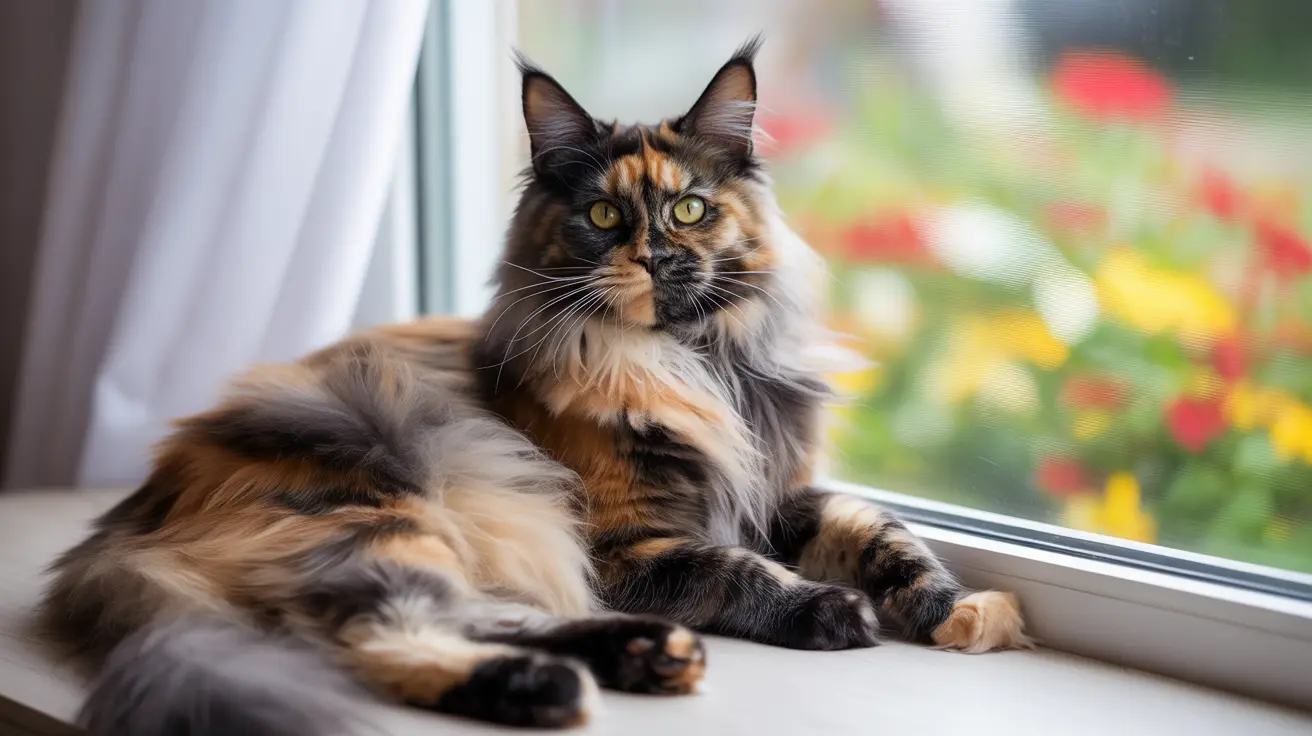Introduction
The distinctive tortie cat personality has long fascinated feline enthusiasts and pet owners alike. These cats, known for their striking multicolored coats, often display an equally colorful temperament that's earned them a special reputation in the cat world. Understanding the unique characteristics and behaviors of tortoiseshell cats can help potential owners and current caretakers better appreciate and nurture these remarkable felines.
While every cat is an individual, tortoiseshell cats have garnered attention for their notably strong-willed nature and distinctive behavioral traits. This comprehensive guide explores the fascinating world of tortie personalities, backed by both scientific research and extensive owner experiences.
The Science Behind Tortoiseshell Cats
Tortoiseshell cats owe their unique appearance to specific genetic combinations. Most notably, 99.96% of torties are female due to the color genes being linked to the X chromosome. Male tortoiseshell cats are extremely rare, occurring in only about 1 in 3,000 cats, and are typically sterile due to genetic anomalies.
While coat color genetics are well understood, the connection between coat pattern and personality remains largely anecdotal. However, this hasn't stopped generations of cat owners from observing and documenting distinct behavioral patterns in their tortie companions.
Defining the Classic Tortie Temperament
The term "tortitude" has become synonymous with the bold, assertive nature often associated with tortoiseshell cats. These felines typically display several characteristic traits:
- Strong-willed and independent nature
- High levels of self-confidence
- Distinctive vocalization patterns
- Pronounced territorial behavior
- Strong bonds with chosen family members
Common Behavioral Traits
Tortoiseshell cats often exhibit specific behavioral patterns that set them apart from other felines:
Social Dynamics
These cats typically form strong, exclusive bonds with their preferred human companions. They may show less tolerance for other pets and can be particular about their social interactions.
Communication Style
Torties are often notably vocal, using a variety of sounds to express their needs and opinions. They're known for being expressive and aren't shy about communicating their desires.
Territory and Space
Many tortie owners report their cats being particularly territorial, requiring clear boundaries and respect for their personal space. This trait can manifest in both protective and assertive behaviors.
Living with a Tortoiseshell Cat
Successfully sharing your home with a tortie requires understanding and adapting to their unique personality traits:
- Establish consistent daily routines
- Provide multiple peaceful retreats throughout the home
- Respect their independence while maintaining loving boundaries
- Engage in regular interactive play sessions
- Create opportunities for mental stimulation
Frequently Asked Questions
What does "tortitude" mean in relation to tortoiseshell cat personality?
Tortitude refers to the distinctive personality traits commonly associated with tortoiseshell cats, including their strong-willed nature, independence, and sometimes sassy or feisty behavior. This term encompasses their reputation for being confident, assertive, and particularly expressive cats.
Why are most tortoiseshell cats female, and how rare are male torties?
Tortoiseshell coloring is linked to the X chromosome, which is why 99.96% of torties are female. Male tortoiseshell cats occur in approximately 1 in 3,000 cases and typically result from a rare genetic condition (XXY chromosomes) that renders them sterile.
How do tortoiseshell cats differ in behavior from other cat coat colors?
While scientific evidence is limited, tortoiseshell cats are often reported to be more independent, vocal, and strong-willed compared to cats of other colors. However, individual personality varies significantly and is influenced by factors beyond coat color.
What are common signs of a tortie cat's mood swings or sassiness?
Typical signs include sudden changes in vocalization, quick transitions between affectionate and aloof behavior, assertive body language, and clear communication of preferences through both vocal and physical cues.
How can I best care for and bond with a strong-willed tortoiseshell cat?
Success comes from respecting their independence while maintaining consistent routines, providing plenty of environmental enrichment, offering regular playtime, and allowing them to set the pace for physical affection and interaction.
Conclusion
While the distinctive tortie cat personality continues to captivate pet owners worldwide, it's important to remember that each cat is unique. Understanding and appreciating their individual characteristics while providing appropriate care and attention will help create a strong, lasting bond with these remarkable felines.






